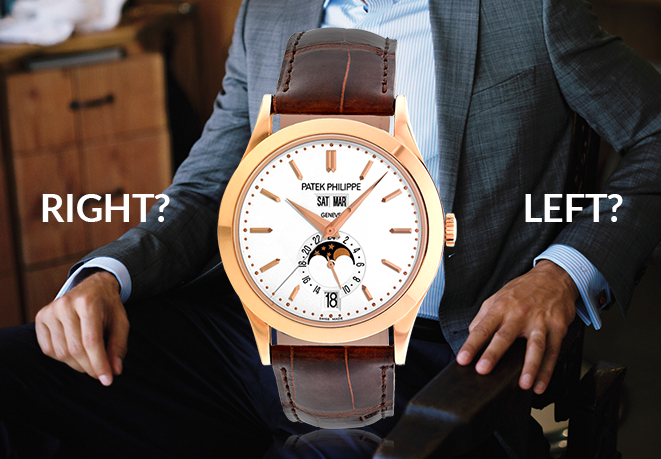Most right-handed men wear their watches on their left wrist. In fact this is a matter purely of habit and comfort; there is no particular logic that decides which wrist the wearer should use for a man’s watch.
There are some practical considerations. For people who use a writing instrument like a pen or pencil a lot, wearing a man’s watch on the hand opposite to the one they use most does make life much easier.
There’s a good deal of logic in wearing your watch such that it doesn’t get in way of the working of your dominant hand: there is simply less risk of the watch getting damaged.
The type of mechanism might be an issue, though. In fact in the past when wind-up men’s watches were the norm, the knurled winder was normally sited on the right-hand side of the watch next to the three o’clock position. With the watch on the left wrist, this made it easier to access for people who are right-handed. In practice this meant that most watches could reasonably be described as ‘right-handed’.
Modern watches rarely use a mechanical winder, so the issue is less important. Some watches still have controls and settings knobs on the side of the bezel, however, and these still tend to be on the right side of the watch.
In fact if you believe in the validity of Chinese traditional medicine and you regularly wear a man’s watch on your left wrist, you should consider switching to the right side occasionally. The theory is that over time the battery in the watch can have a negative effect on the heart meridian, the energy path that affects the heart. The heart meridian is supposedly most sensitive down the left arm, and watches are a particular hazard because of the battery can disrupt the normal flow of meridian energy.
It should be said that conventional medicine and science would dispute this conclusion. But at the very least it makes sense to switch your watch from one wrist to the other from time to time, if only to even out your tan!
